Sharks have been the ocean’s enigmatic predators, often capturing our imaginations with their awe-inspiring grandeur. Yet, amidst the ocean depths, there exist species so rare and elusive that they remain largely unknown to most. These lesser-known sharks boast unique adaptations, fascinating histories, and some are even considered living fossils.
1. The Goblin Shark: The Stuff of Nightmares
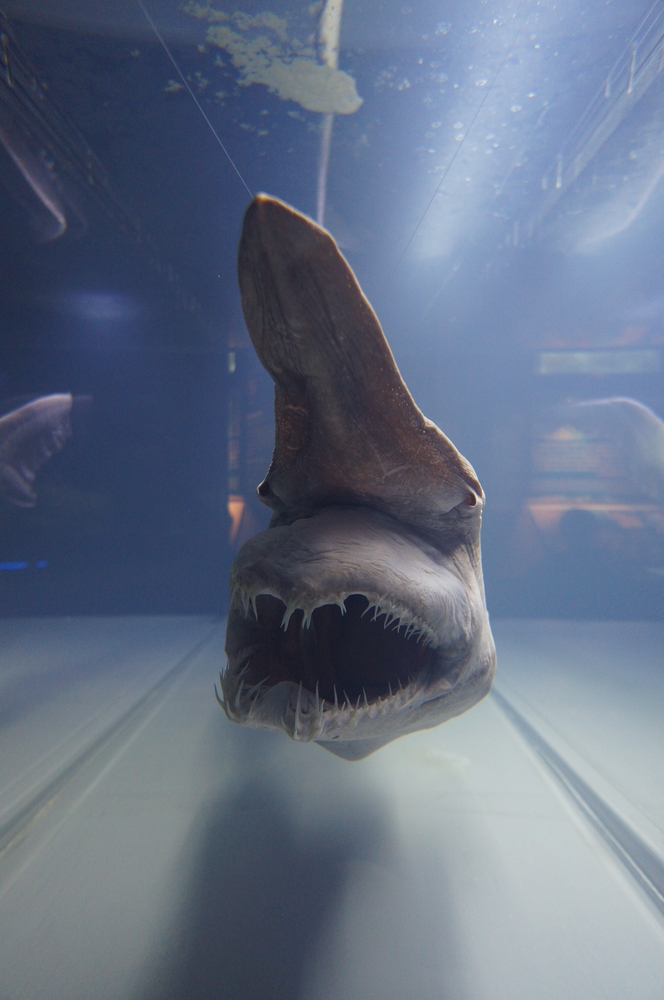
If you’ve ever wondered what a prehistoric monster might look like, the Goblin Shark is your answer. This deep-sea dweller can be found lurking at depths of over 1,300 meters, with a bizarre appearance that could easily be mistaken for a creature from a sci-fi movie. Its elongated snout and razor-sharp teeth make it look more like a relic of the past than a contemporary species. Unlike your typical shark, the Goblin Shark’s jaws can protrude to snatch prey with a speed that is almost too quick to capture on film. According to National Geographic, this “living fossil” is rarely seen due to its preference for the dark, high-pressure realms of the ocean.
The Goblin Shark’s odd pinkish hue is due to the translucence of its skin, which reveals the capillaries beneath. While its diet mainly consists of fish and cephalopods, the exact details of its lifecycle are largely shrouded in mystery. Scientists believe that its unique hunting method involves using its sensitive snout to sense electric fields produced by nearby prey, snapping its jaws forward in a rapid motion to catch them. Given its rarity and unusual features, the Goblin Shark has become a symbol of the unexplored mysteries that the ocean still holds. So, next time you think of sharks, remember this strange creature from the depths.
2. The Frilled Shark: A Living Fossil
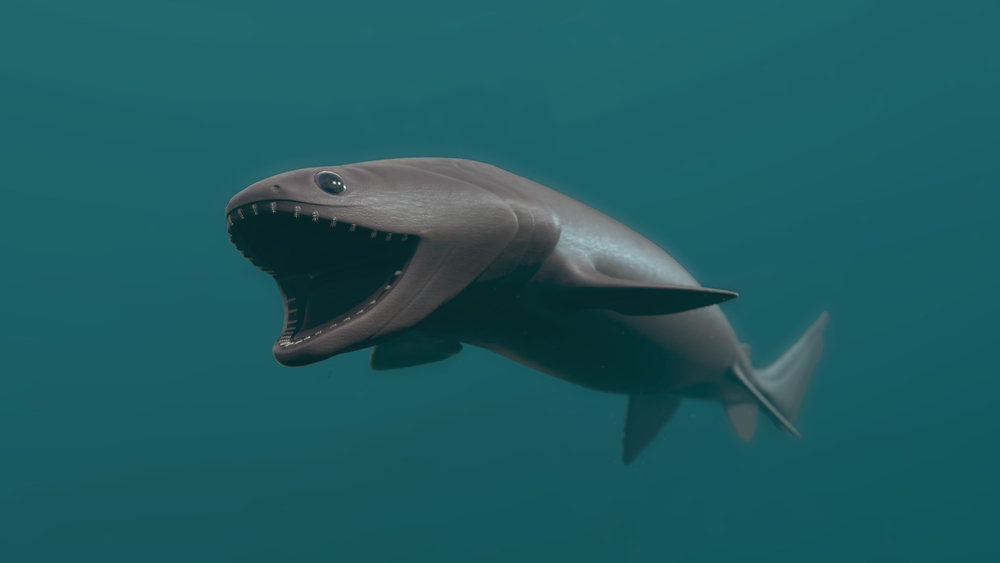
Imagine a shark that looks more like an eel and swims with an eerie, undulating movement. The Frilled Shark is often described as a “living fossil” because it has remained relatively unchanged for millions of years. This deep-sea predator is equipped with frilly gills and a long, slender body that can reach up to two meters in length. Its jaw is like a trap filled with about 300 needle-like teeth arranged in 25 rows, perfect for snagging slippery prey. According to Ocean Conservancy, this ancient species is rarely seen by humans due to its preference for deep waters, often as deep as 1,500 meters.
Unlike other sharks, Frilled Sharks have a surprisingly slow gestation period, with pregnancies possibly lasting up to three and a half years, which is one of the longest among vertebrates. This slow reproductive rate, coupled with its deep-sea habitat, makes the Frilled Shark vulnerable to threats that might not immediately be apparent. Occasionally, these sharks are caught as bycatch in deep-sea fisheries, but their rarity in shallow waters keeps them mostly out of harm’s way. Learning about the Frilled Shark is like peering into the past, offering a glimpse of how sharks might have looked millions of years ago.
3. The Cookiecutter Shark: A Perfectly Shaped Bite
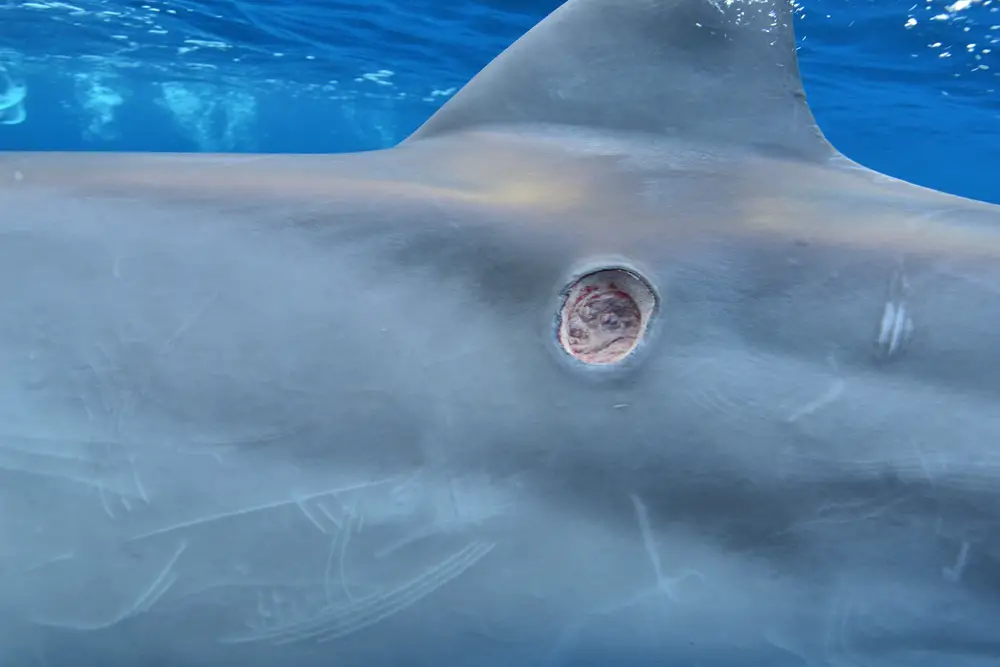
Don’t let its small size fool you; the Cookiecutter Shark is infamous for the perfectly round bites it takes out of its prey. Named for the cookie-shaped wounds it leaves, the Florida Museum of Natural History notes that this shark uses its specialized teeth to latch onto larger animals like whales, dolphins, and even submarines. Its unique feeding strategy involves suctioning onto its prey and twisting its body to achieve that notorious circular bite. This tiny predator, typically only about 50 centimeters long, is found in warm oceanic waters across the globe.
The Cookiecutter Shark is equipped with photophores on its belly that help it blend into the faint light above it, making it nearly invisible to predators and prey alike. Its small size and bioluminescence make it a master of deception, allowing it to approach larger animals unnoticed. Despite their peculiar feeding habits, Cookiecutter Sharks are not considered a significant threat to humans. However, they can pose a risk to underwater equipment, having been known to damage fiber optic cables and submarine skins with their bites.
4. The Greenland Shark: The Ancient Mariner
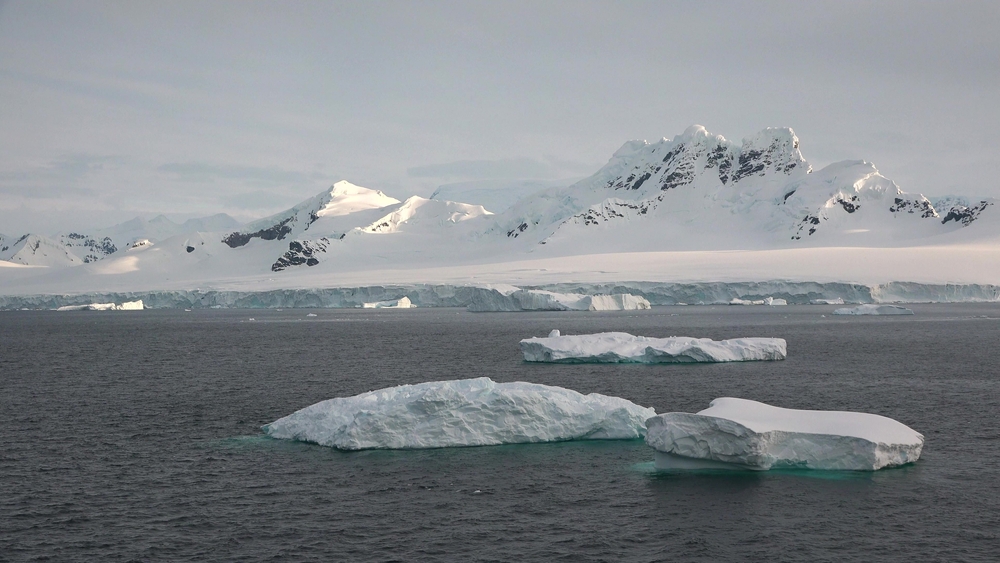
If there were an award for the longest-lived vertebrate, the Greenland Shark would take the crown. These slow-moving giants have been estimated to live for over 400 years, making them one of the oldest known species on the planet. Greenland Sharks inhabit the icy waters of the North Atlantic and Arctic Oceans, often at depths of up to 2,200 meters. Their slow metabolism and cold environment contribute to their impressive longevity.
With a length of up to 7 meters, these sharks are not the fastest swimmers, cruising along at a leisurely pace. They are scavengers by nature, feeding on a diet that includes fish and marine mammals. Interestingly, their flesh is toxic due to high levels of trimethylamine oxide but can be eaten after proper preparation, as practiced in Icelandic cuisine. The Greenland Shark’s remarkable lifespan and slow-paced lifestyle offer fascinating insights into the mysteries of aging and evolution.
5. The Sawshark: Nature’s Chainsaw
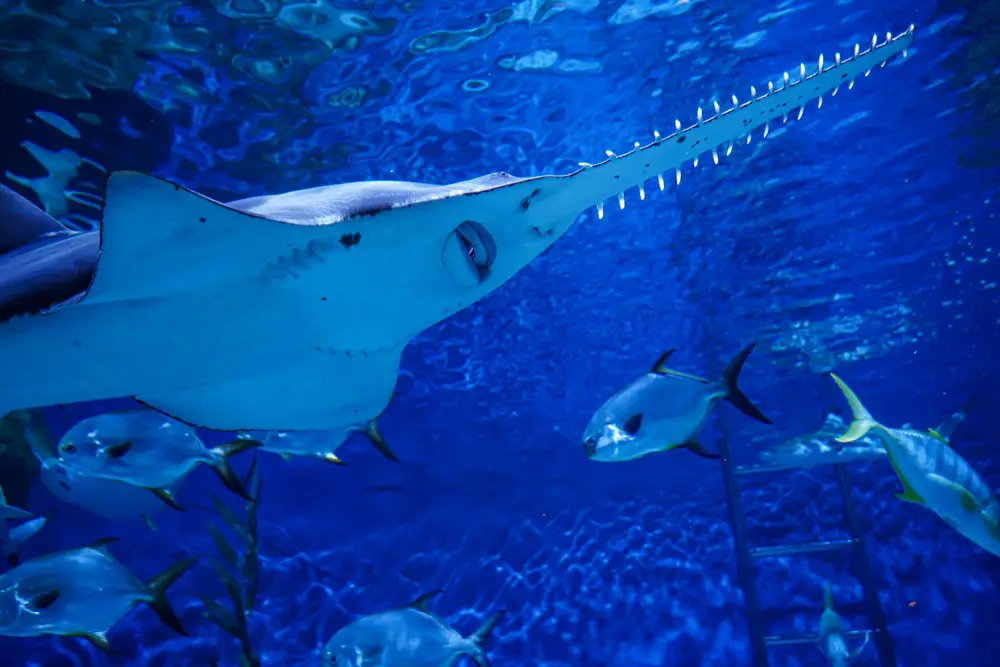
The Sawshark is as fierce as its name suggests, boasting a long, saw-like snout edged with sharp teeth. This unique feature makes it instantly recognizable and is used to slash at prey in swift, side-to-side movements. Sawsharks are found in the deep waters off the coasts of Australia, Japan, and South Africa. There are several species of Sawsharks, each with slightly differing features, but all share the distinctive rostrum that sets them apart from other shark species.
The elongated snout of the Sawshark contains sensitive barbels, which are used to detect prey buried in the sand. This adaptation makes them proficient hunters, capable of finding and catching fish and crustaceans hidden from view. Despite their fearsome appearance, Sawsharks are generally not dangerous to humans, as they prefer the depths far from human activity. Their fascinating adaptations and unique hunting methods make them a captivating subject for scientists and shark enthusiasts alike.
6. The Thresher Shark: Equipped with a Whiplash Tail
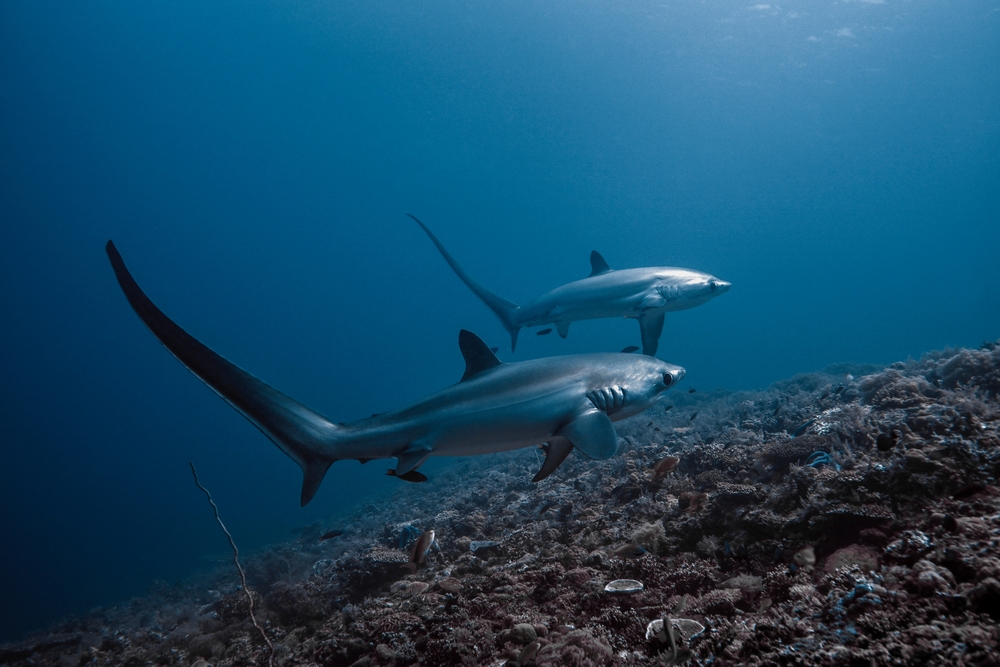
Meet the Thresher Shark, distinguished by its extraordinarily long tail that can be as long as its body. This impressive appendage isn’t just for show; it’s a powerful hunting tool used to stun prey. The Thresher Shark can whip its tail with incredible speed and force, creating shockwaves that incapacitate schools of fish. Found in both deep and shallow waters worldwide, these sharks are a marvel of evolution, demonstrating nature’s ingenuity in predatory adaptations.
Despite their powerful weaponry, Thresher Sharks are known to be quite shy and are rarely a threat to divers. Their long tails also play a role in their swimming dynamics, contributing to their agility and speed in the water. Thresher Sharks have a broad diet, including fish, squid, and crustaceans, making them important players in the marine ecosystem. Observing a Thresher Shark in action is a rare treat for divers and marine biologists, as these creatures often inhabit the twilight zone of the ocean, where light is scarce.
7. The Wobbegong: The Master of Camouflage
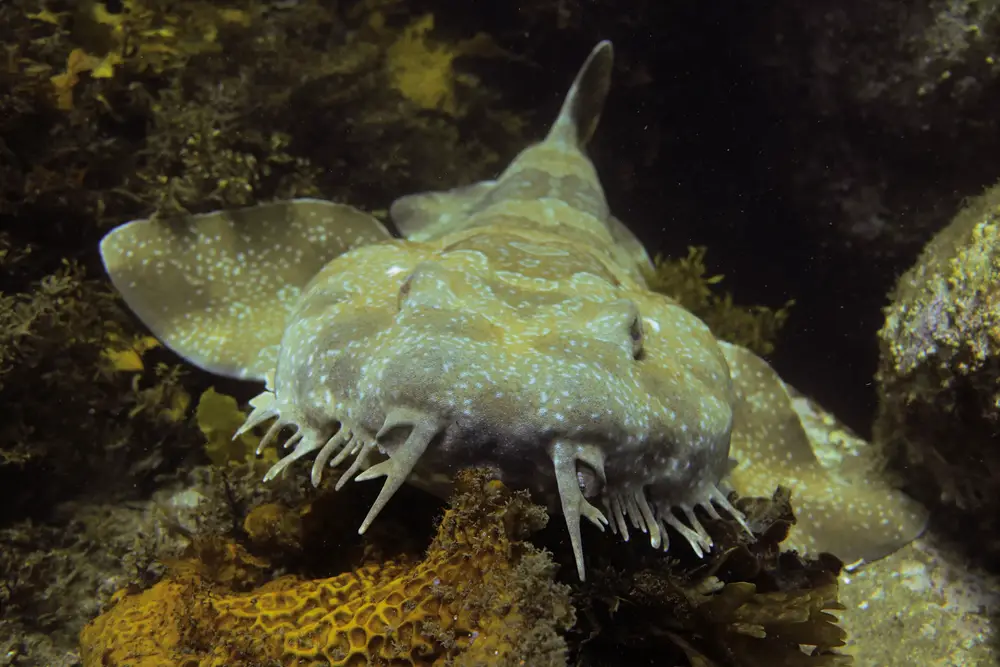
The Wobbegong, also known as a carpet shark, is a master of disguise in the underwater world. With a flat, ornate body that blends seamlessly with the ocean floor, this shark is often mistaken for a patch of coral or seaweed. Wobbegongs are found mainly in the shallow waters around Australia and Indonesia, where they lie in wait for unsuspecting prey. Their unique appearance is coupled with an ambush hunting technique, making them highly effective predators despite their sluggish demeanor.
The Wobbegong’s mouth is lined with small, sharp teeth, perfectly adapted for snatching fish that wander too close. Their diet consists mainly of fish, but they’ve also been known to eat crustaceans and cephalopods. While Wobbegongs are generally not aggressive towards humans, they can bite if provoked or accidentally stepped on, as they are expert hiders. Their incredible ability to blend in with their surroundings showcases the diverse strategies sharks have evolved for survival in the marine world.
8. The Angelshark: The Underwater Predator in Disguise
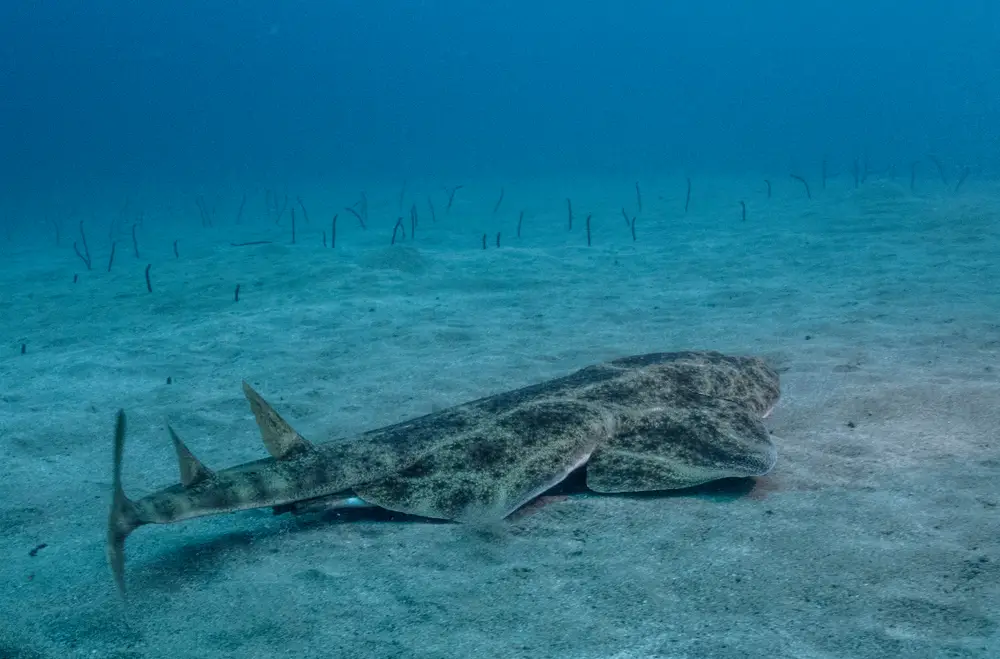
The Angelshark may not look like your typical shark at first glance, resembling more of a flattened ray. This unique morphology allows the Angelshark to bury itself in the sand, lying in wait for prey to pass by. Found in coastal waters, primarily around the coastlines of Europe and North Africa, they are masters of stealth and patience. Their coloration helps them camouflage with the seabed, making them nearly invisible to both predators and prey.
Despite their angelic name, these sharks are skilled hunters, using a quick burst of speed to ambush their prey with precision. Fish, crustaceans, and mollusks make up their diet, reflecting their role as important predators in their ecosystems. Angelsharks are critically endangered due to habitat loss and fishing pressures, making conservation efforts vital for their survival. Understanding their behavior and habitat needs is crucial for efforts to protect and restore their populations in the wild.
9. The Tasselled Wobbegong: A Fringed Predator
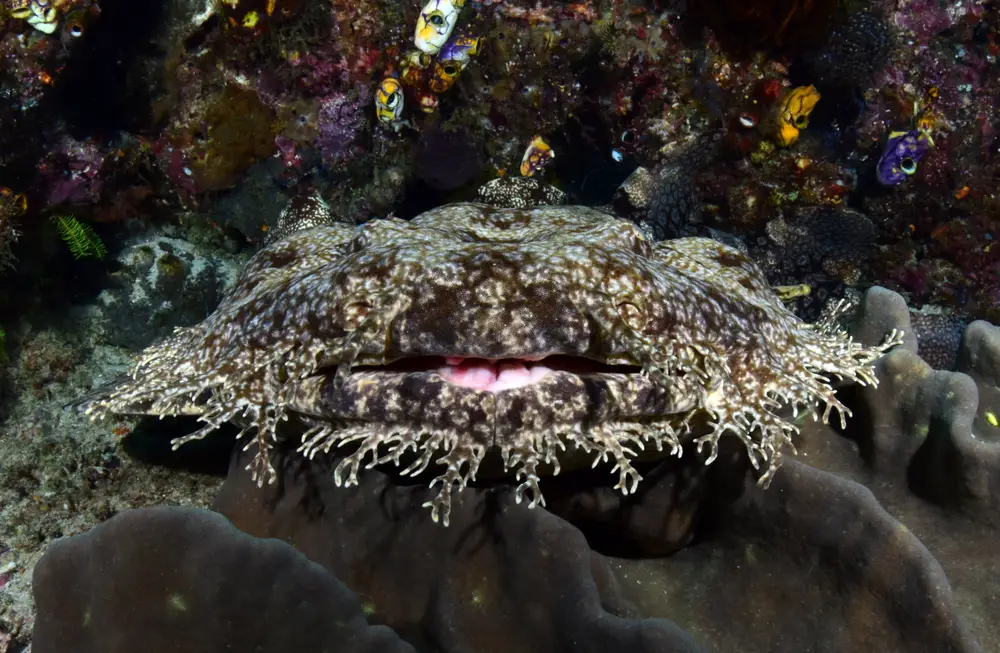
The Tasselled Wobbegong is another fascinating member of the carpet shark family, known for its intricate, fringed appearance. These tassels are not just for show; they serve to break up the shark’s outline, enhancing its camouflage on the ocean floor. Found in the coral reefs of Northern Australia and New Guinea, the Tasselled Wobbegong relies on its stealth and patience to catch unwary fish. This species embodies the perfect blend of beauty and function, with its tassels adding to its mysterious allure.
When prey ventures too close, the Tasselled Wobbegong strikes with lightning speed, using its sharp teeth to secure a meal. Despite its sedentary nature, this shark is an adept hunter and plays a significant role in maintaining the balance of its reef ecosystem. While not aggressive towards humans, they can deliver a painful bite if disturbed. The Tasselled Wobbegong is a perfect example of nature’s ingenuity, showcasing the diverse adaptations sharks have developed to thrive in their environments.
10. The Whale Shark: The Gentle Behemoth
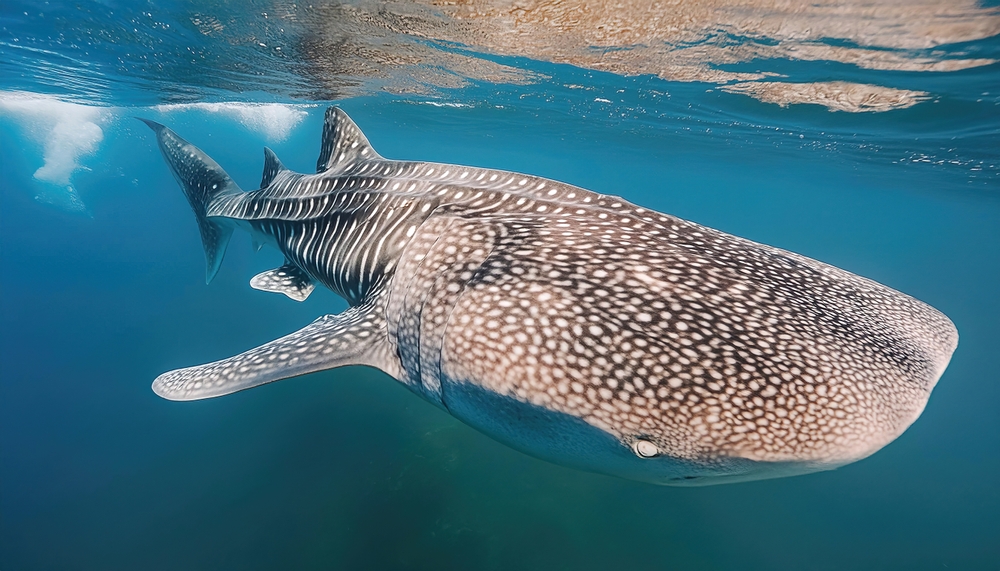
The Whale Shark holds the title of the largest fish in the sea, yet it’s renowned for its gentle nature. These colossal creatures can grow up to 12 meters long and weigh as much as 20 tons, making their presence in the ocean truly awe-inspiring. Despite their size, Whale Sharks are filter feeders, consuming plankton, small fish, and krill by swimming with their enormous mouths open. Known for their distinctive spotted patterns, each Whale Shark’s markings are unique, much like a human fingerprint.
Whale Sharks are found in warm, tropical oceans around the world and are known to migrate long distances in search of food. They are a favorite among divers, who flock to places like Mexico and the Philippines for the chance to swim alongside these gentle giants. Unfortunately, Whale Sharks face threats from commercial fishing and habitat destruction, leading to their classification as an endangered species. Conservation efforts are essential to ensure the survival of these majestic creatures, who play a vital role in the marine ecosystem.
11. The Basking Shark: The Passive Giant
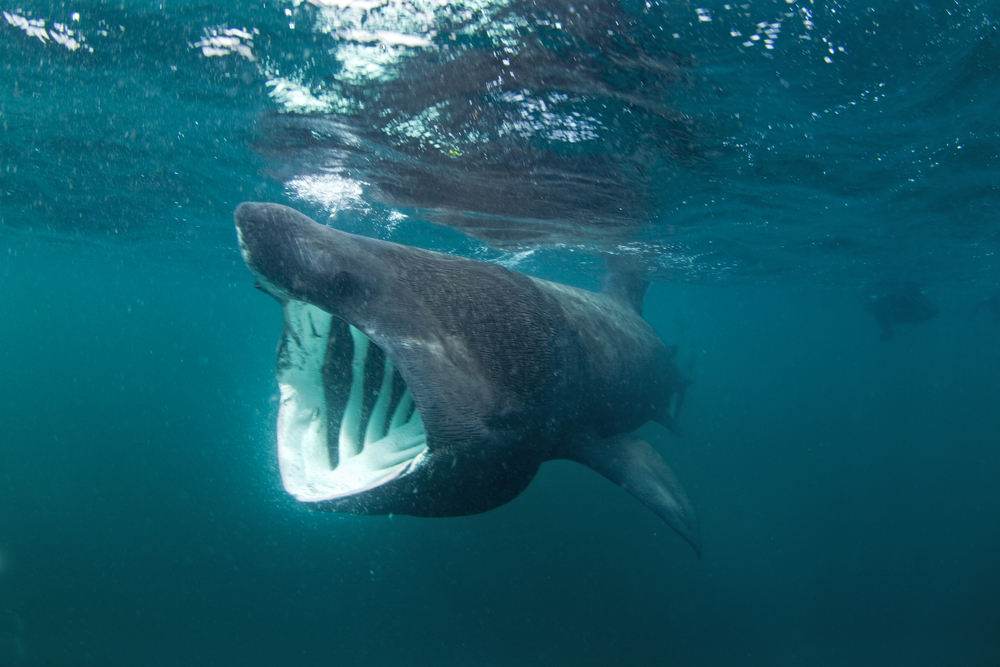
The Basking Shark is another massive filter feeder, second in size only to the Whale Shark. Despite its impressive size, growing up to 12 meters in length, the Basking Shark is a gentle giant, gliding leisurely through the ocean with its mouth agape. This allows it to filter thousands of gallons of water per hour, capturing plankton and small fish in its gill rakers. Basking Sharks are often seen near the surface, especially in temperate waters, where they follow the plankton blooms.
Their slow, steady movements and calm demeanor make them a favorite among marine wildlife enthusiasts. Basking Sharks are known for their distinctive dorsal fins, which can be seen breaking the surface of the water as they feed. As with many large marine species, Basking Sharks face threats from overfishing and habitat degradation, leading to declining populations. Protecting these gentle giants is crucial for maintaining the health of our oceans and preserving the incredible diversity of life within them.
